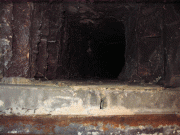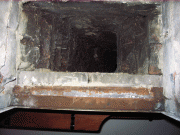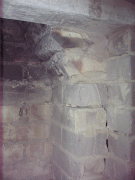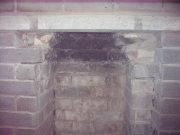I have removed the gas fire (and inner fireplace) from my chimney to have a log burner installed. I've had a ballpark quote of 3k for this which included £500 burner, new steel in enlarged chimney, liner, insulation, new pot, etc. That is far more than I expected and am hoping to bring material costs in for about £1k and do as much of the work as I can myself.
Stage 1 is enlarging the hole. Chimney itself is 1122mm wide externally and narrows to around 600mm when it reaches 1st floor height (as well as deviating to the left).
Current opening is 625mm height , 460mm width, 345mm depth.
Log burner dimensions are 609mm height, 456mm width, 380mm depth. Including hearth, top flue and surround spacing the new hole needs to be around 750mm height, 600mm width.
How do I go about working what size lintel I need? External appearance isn't of much concern as the gf wants all the brickwork plastered over anyway
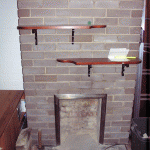
Stage 1 is enlarging the hole. Chimney itself is 1122mm wide externally and narrows to around 600mm when it reaches 1st floor height (as well as deviating to the left).
Current opening is 625mm height , 460mm width, 345mm depth.
Log burner dimensions are 609mm height, 456mm width, 380mm depth. Including hearth, top flue and surround spacing the new hole needs to be around 750mm height, 600mm width.
How do I go about working what size lintel I need? External appearance isn't of much concern as the gf wants all the brickwork plastered over anyway



